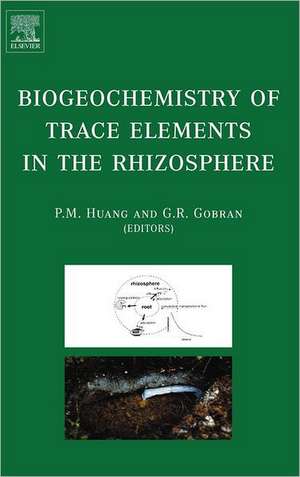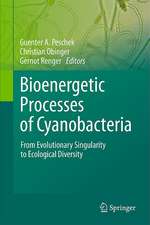Biogeochemistry of Trace Elements in the Rhizosphere
Editat de G.R. Gobran, P. M. Huangen Limba Engleză Hardback – 8 sep 2005
It is an essential reference work for chemists and biologists studying environmental systems, as well as earth, soil and environmental scientists.
* 15 chapter book, which addresses a variety of issues on fundamentals of microscopic levels and the impact on food chain contamination and the terrestrial ecosystem
Preț: 1139.97 lei
Preț vechi: 1561.61 lei
-27% Nou
Puncte Express: 1710
Preț estimativ în valută:
218.14€ • 228.33$ • 181.56£
218.14€ • 228.33$ • 181.56£
Carte tipărită la comandă
Livrare economică 31 martie-14 aprilie
Preluare comenzi: 021 569.72.76
Specificații
ISBN-13: 9780444519979
ISBN-10: 0444519971
Pagini: 480
Dimensiuni: 165 x 240 x 24 mm
Greutate: 1.03 kg
Editura: ELSEVIER SCIENCE
ISBN-10: 0444519971
Pagini: 480
Dimensiuni: 165 x 240 x 24 mm
Greutate: 1.03 kg
Editura: ELSEVIER SCIENCE
Public țintă
Chemists and biologists studying environmental systems, as well as earth, soil and environmental scientistsCuprins
Part I. Fundamentals of transformations and dynamics of trace elements.
1. Contribution of rhizospheric processes to mineral weathering in forest soils.
2. Mineral weathering in the rhizosphere of forested soils.
3. Characteristics of rhizosphere soil from natural and agricultural environments.
4. Metal complexation by phytosiderophores in the rhizosphere.
5. Effects of organic ligands on the adsorption of trace elements onto metal oxides and organo–mineral complexes.
6. Kinetics of cadmium desorption from iron oxides formed under the influence of citrate.
7. Biogeochemistry of soil cadmium and the impact on terrestrial food chain contamination.
Part II. Speciation, bioavailability, and phytotoxicity of trace elements.
8. Speciation and bioavailability of trace metals (Cd, Cu, Ni, Pb, Zn) in the rhizosphere of contaminated soils.
9. Influence of willow (Salix viminalis L.) roots on soil metal chemistry: Effects of clones with varying metal uptake potential.
10. Fractionation and bioavailability of copper, cadmium and lead in rhizosphere soil.
11. Bioavailability and extractability of copper and zinc in a soil amended with pig slurry: Effect of iron deficiency in the rhizosphere of two grasses.
12. Binding and electrostatic attraction of trace elements to plant root surfaces.
13. Model development for simulating the bioavailability of Ni to the hyperaccumulator Thlaspi goesingense.
14. Effect of arbuscular mycorrhizal (AM) fungi on heavy metal and radionuclide transfer to plants.
15. Uptake and translocation of uranium by arbuscular mycorrhizal fungi under monoxenic culture conditions.
1. Contribution of rhizospheric processes to mineral weathering in forest soils.
2. Mineral weathering in the rhizosphere of forested soils.
3. Characteristics of rhizosphere soil from natural and agricultural environments.
4. Metal complexation by phytosiderophores in the rhizosphere.
5. Effects of organic ligands on the adsorption of trace elements onto metal oxides and organo–mineral complexes.
6. Kinetics of cadmium desorption from iron oxides formed under the influence of citrate.
7. Biogeochemistry of soil cadmium and the impact on terrestrial food chain contamination.
Part II. Speciation, bioavailability, and phytotoxicity of trace elements.
8. Speciation and bioavailability of trace metals (Cd, Cu, Ni, Pb, Zn) in the rhizosphere of contaminated soils.
9. Influence of willow (Salix viminalis L.) roots on soil metal chemistry: Effects of clones with varying metal uptake potential.
10. Fractionation and bioavailability of copper, cadmium and lead in rhizosphere soil.
11. Bioavailability and extractability of copper and zinc in a soil amended with pig slurry: Effect of iron deficiency in the rhizosphere of two grasses.
12. Binding and electrostatic attraction of trace elements to plant root surfaces.
13. Model development for simulating the bioavailability of Ni to the hyperaccumulator Thlaspi goesingense.
14. Effect of arbuscular mycorrhizal (AM) fungi on heavy metal and radionuclide transfer to plants.
15. Uptake and translocation of uranium by arbuscular mycorrhizal fungi under monoxenic culture conditions.














